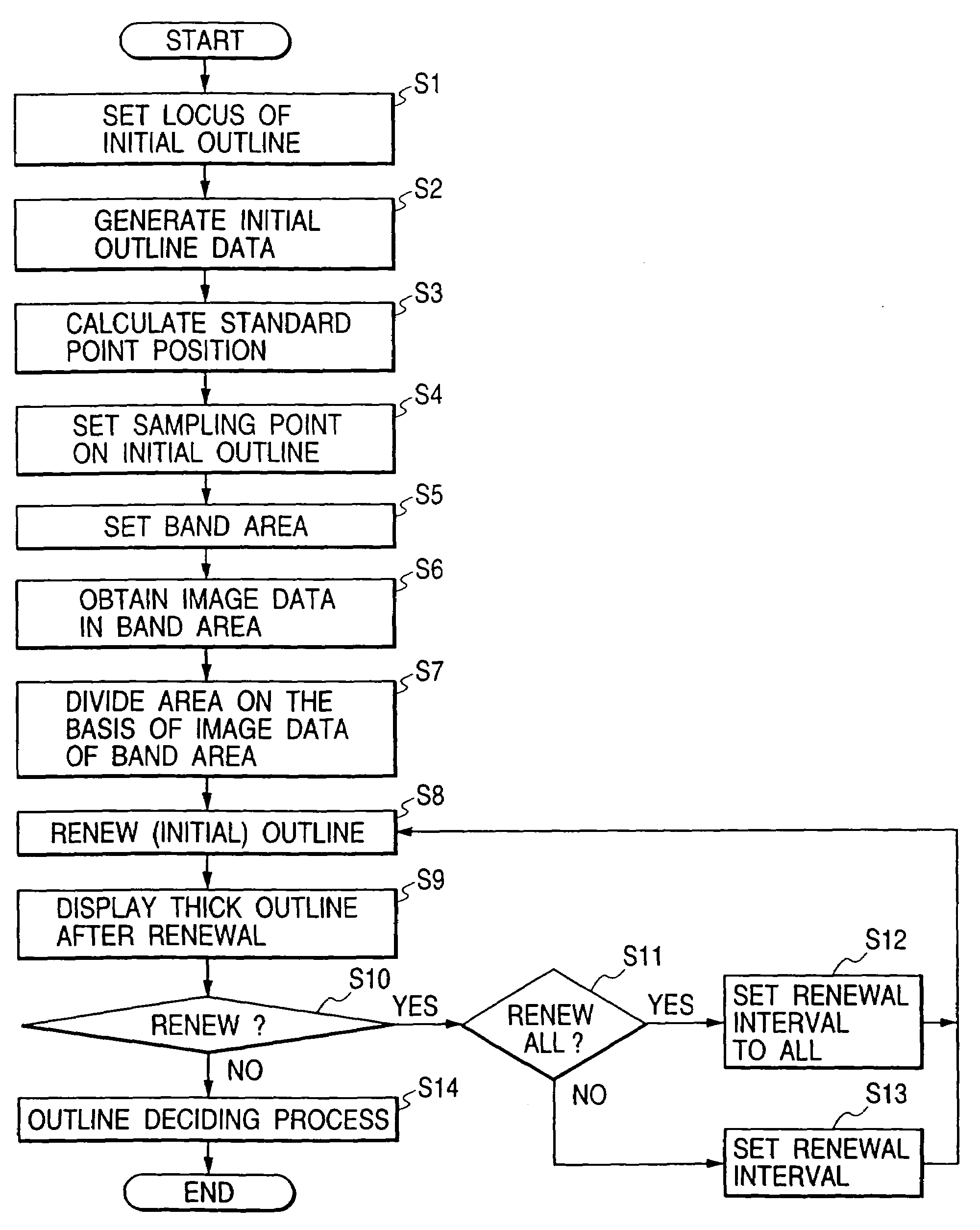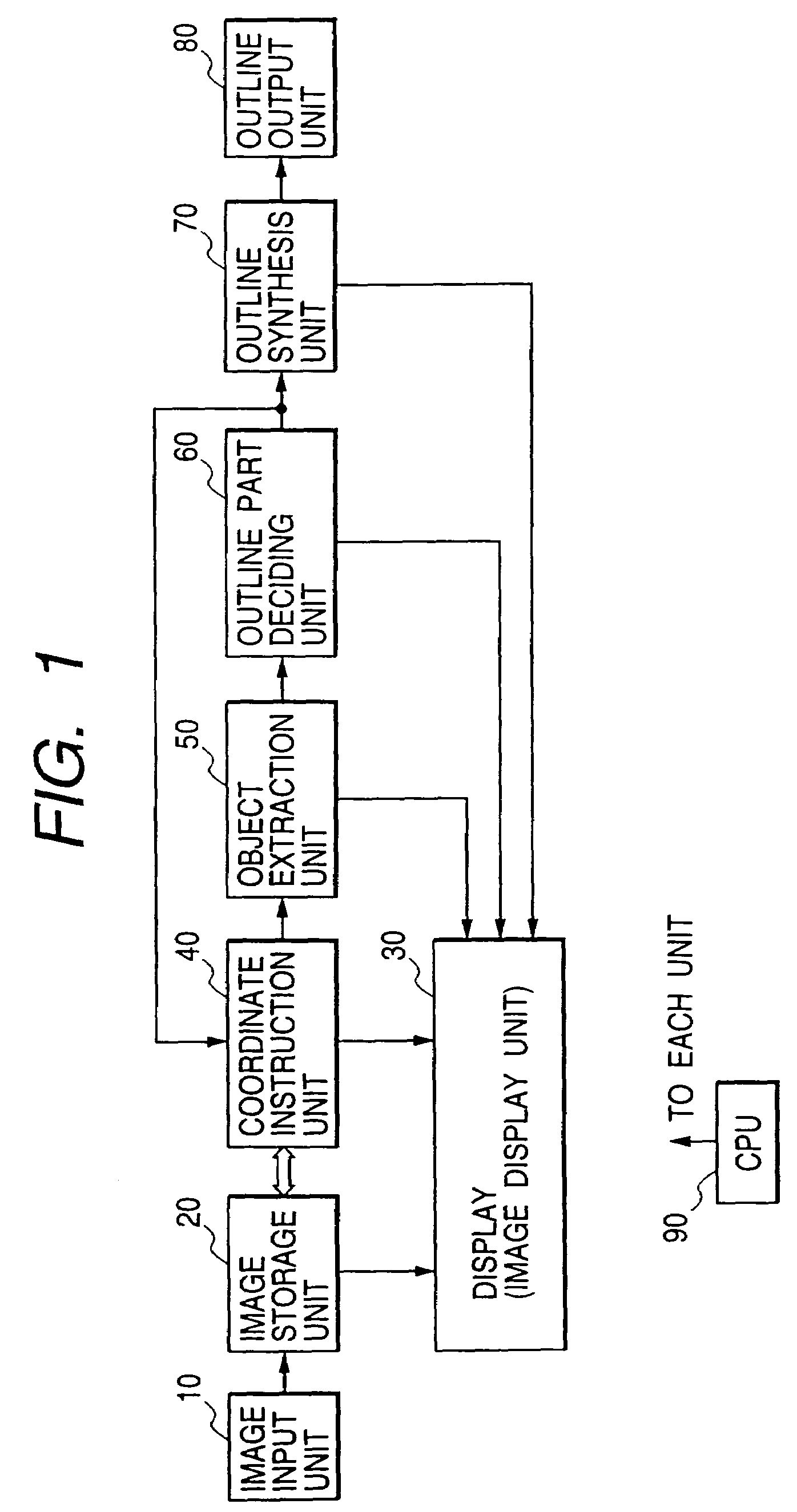Image processing apparatus, image processing method, and storage medium
a technology of image processing and image processing method, which is applied in the field of image processing apparatus, image processing method and storage medium, can solve the problems of inability to employ process, inability to use process, and large load on the operator, and achieve the effect of easy and correct extraction of a specific obj
- Summary
- Abstract
- Description
- Claims
- Application Information
AI Technical Summary
Benefits of technology
Problems solved by technology
Method used
Image
Examples
first embodiment
[0046]FIG. 1 is a functional diagram that presents a representation of most of the characteristics of a first embodiment. The arrangement shown at the bottom is implemented by a personal computer or a workstation. In FIG. 1, an image input unit 10 is an input unit, such as a scanner, a digital camera or a digital VTR (VCR), that has a pickup function, or an input unit for reading recorded image data from a storage medium, such as a CD-ROM, an MO, a compact flash memory or a hard disk, and supplying the image data to the image input unit 10. An image storage unit 20 is used to store an input image. An image display unit 30 is a CRT or a liquid crystal display for displaying an input image. A coordinate instruction unit 40 is a mouse or a keyboard for designating arbitrary coordinates or an arbitrary area in an image that is displayed. And an object extraction unit 50 extracts a specific object from an image.
[0047]An outline part deciding unit 60 selects a part of an outline of an obj...
second embodiment
[0077]FIG. 7 is a flowchart showing the processing for a second embodiment of the present invention. The primary difference from the first embodiment in FIG. 2 is the addition of steps 700 and 710. At step 700, an object extraction unit is selected, and at step 710, a check is performed to determine whether the currently used object extraction unit should be changed or should continue to be employed.
[0078]An explanation will now be given, while referring to FIG. 8, for the processing performed to switch between the use of the above three types as the object extraction method.
[0079]FIG. 8 is a diagram showing the state wherein the operator extracts an object while switching between the three types of object extraction methods shown in FIGS. 3 to 5.
[0080]In FIG. 8, an object 800 is the one to be extracted; an enclosure line 810 is a line described to enclose the object 800; a closed area 820 is an area regarded as evincing same quality (e.g., the same color or the same density) as a d...
third embodiment
[0083]According to the first and the second embodiments, the operator, for example, determines when to terminate step 140 for the authentication of the outline segments by the outline part deciding unit 60, and after step 140, the outline segments are collectively synthesized at step 160. In the third embodiment, step 140, for authentication of the outline segments, and step 160, for the synthesis of the outline segments, are directly connected together to automatically determine the end of the outline part of the authentication step.
[0084]FIG. 9 is a flowchart showing the processing performed for the third embodiment. In FIG. 9, the termination decision step 150 in FIGS. 2 and 7 is deleted, and the use of the outline part authentication step 140 and the outline synthesis step 160 is continued. Further, step 900 for determining whether a closed curve has been completed and step 910 for determining whether an outline should be corrected after the closed curve has been completed are a...
PUM
 Login to View More
Login to View More Abstract
Description
Claims
Application Information
 Login to View More
Login to View More - R&D
- Intellectual Property
- Life Sciences
- Materials
- Tech Scout
- Unparalleled Data Quality
- Higher Quality Content
- 60% Fewer Hallucinations
Browse by: Latest US Patents, China's latest patents, Technical Efficacy Thesaurus, Application Domain, Technology Topic, Popular Technical Reports.
© 2025 PatSnap. All rights reserved.Legal|Privacy policy|Modern Slavery Act Transparency Statement|Sitemap|About US| Contact US: help@patsnap.com



